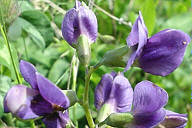 Loading... Please wait...
Loading... Please wait...- Home
- SEEDS
- SEED MIXES
- BUY PLANTS
- Info Request
-
Educational Videos
- Greenhouse Transplanting Demonstration
- Native Seed Cleaning demonstration at Ion Exchange Native Seed and Plant Nursery
- Attracting Butterflies
- Bidens - Bidens cernua Harvest Video
- Big Blue Stem Harvest
- Butterfly Milkweed Video
- Button Blazingstar - Liatris aspera Video
- Buttonbush - Cephalanthus occidentalis Video
- Canada Anemone - Anemone canadensis Harvest Video
- Cardinal Flower - Lobelia cardinalis Video
- Control Burn - Wildflower Field
- Cream Gentian - Gentiana flavida
- Culver's Root - Veronicastrum virginicum Video
- Cup Plant - Silphium perfoliatum Video
- Dormant Seeding | Planting
- Earthyman's Favorite Wildflowers Video
- Eco-Friendly Golf Course Seed Mix
- Floating Islands
- Fringed Loosestrife - Lysimachia ciliata Video
- Giant Yellow Hyssop - Agastache nepetoides Video
- Indiangrass - Sorghastrum nutans Video
- Iowa Prairie Partner Program
- Leadplant - Amorpha canescens (Potted) Video
- Meadow Blazingstar - Liatris ligulistylis
- Midland Shooting Stars - Dodecatheon meadii Video
- Native Plant Nursery Field Irrigation Experiment
- Nodding Onion - Allium cernuum Video
- Ohio spiderwort - Tradescantia ohiensis Video
- Old Man's Beard - Clematis virginiana blooms Video
- Oxeye Sunflower - Heliopsis helianthoides Video
- Prairie Spiderwort - Tradescantia bracteata
- Purple Coneflower - Echinacea purpurea Video
- Rain Garden or Water Garden Video
- Rattlesnake Master - Eryngium yuccifolium Video
- Riverbank Stabilization - Wetland Plants
- Rose Mallow - Hibiscus militaris Video
- Rosinweed - Silphium integrifolium Video
- Royal Catchfly - Silene regia
- Showy Tick Trefoil - Desmodium canadense Video
- Sneezeweed - Helenium autumnale Video
- Swamp Betony - Pedicularis lanceolata Video
- Swamp Milkweed - Asclepias incarnata Video
- Sweet Blackeyed Susan - Rudbeckia subtomentosa Video
- Tall Coreopsis - Coreopsis tripteris Video
- Urban Butterfly Garden
- Wild Bergamot - Monarda fistulosa Video
- Wild Geranium - Geranium maculatum Harvest
- Wild Goldenglow - Rudbeckia lanciniata Video
- Wild Petunia - Ruellia humilis Harvest Video
- Woodland Knotweed - Polygonum virginianum Video
- Yellow Coneflower - Ratibida pinnata Video
- Blog
- Resources
- Policies
Contact Us
Phone:
563-419-0837
or 563-535-7231
Email:
hbright@ionXchange.com
Browse Products
Add to Wish List
You Recently Viewed...
Our Newsletter
Product Description
From the Greek baptizein meaning "to dye"; refers to the historical economic use as a poor indigo dye.and "Australis", of Australia.
Found on prairies throughout the Tallgrass region, this species is the more southerly occuring, found in glades and and dry prairies. Normally reaches about 1 foot in height but favorable conditions can yield 3 foot plants. Blooms from May to June.
Native American uses include use as a dye and to treats cuts and scrapes. The Pawnee used this species by pulverizing the seeds and mixing the resulting powder with buffalo fat to treat colic by rubbing the salve on the abdomen.
| Sun Exposure | Prairie, Savanna |
| Soil Moisture | Wet Mesic, Mesic |
| Bloom Time | Summer May, June, July |
| Bloom Color | Blue |
| Max Height | 4 feet |
| Wetland Code | UPL |
| Germ Code | C(10),H,I |
| Seeds Per Packet | 75 |
| Seeds Per Ounce | 1,000 |
Edible Uses: Unknown
Medicinal Uses: Appetizer, digestive. The root is antiemetic, emetic and purgative. There are confusing reports from two sources that the plant is used as an emetic and also that a cold tea is given to stop vomiting. A poultice of the root is anti-inflammatory and is held in the mouth to treat toothaches. The plant is under investigation as a potential stimulant of the immune system.
Herbal Uses: Unknown
Other Uses: A blue dye is obtained from the plant. No more information is given, but it is likely to be the leaves that are use.












